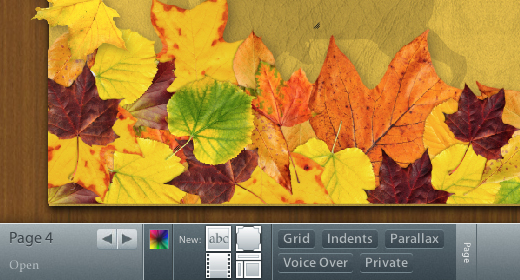Make-Your-Own-E-Books Platform: Aerbook Maker
I’ve spent the past few months reporting on platforms that help school librarians make E-Books available to their patrons. But what about librarians and other educators who want to go beyond a read-only experience and enable their students to easily create, share—and even market—their very own slick, tablet-ready graphical E-Books and mobile apps

To create an ebook or app in Aerbook Maker, start in the users’ dashboard, where you can upload an imprint logo. Next, set the project’s dimensions and orientation from a drop-down menu that makes selection easy with presets currently available for Kindle Fire, iPad, iPhone, iPhone retina display, and Instabook for Instagram. Alternatively, a user can create a project in any custom dimensions they choose. A cover can be added as well as titles and author names. Blank projects start out with a single page in the editor and authors can add images, text, video or audio, repositioning and resizing items and tweaking designs on the fly, with all project changes saved to the cloud. Pages can be saved as templates, too, making it easy to reuse page layouts—a feature that school librarians and teachers could tap into to make it easier for younger students to create picture books.
More sophisticated students can add depth, motion, and interactivity to their ebooks by adding “behaviors”—actions that happen when readers click on them—to any project element. Behaviors include internal links for jumping—hypercard-style—to another page within the book or external links for opening Web pages; playing an audio or video file; or revealing or hiding a page layer. Authors can also add parallax animation, a simple technique that simulates depth by making page elements move at assigned speeds, depending on how “far” they are designated to be from the viewer.
Complete article
here.
Credit:
www.thedigitalshift.com